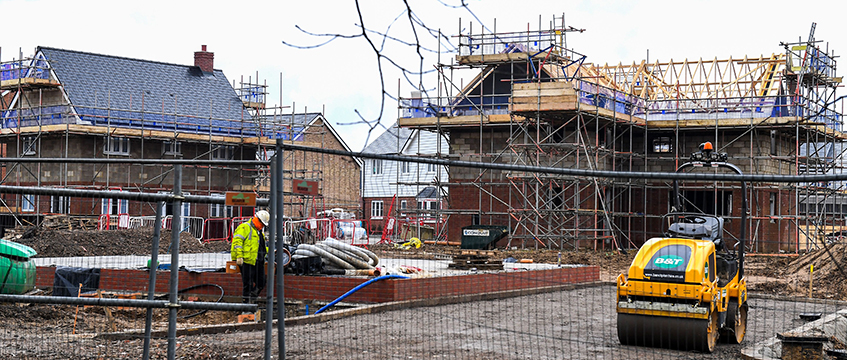Applications for new London homes fall to lowest quarterly figure ever recorded
Planning applications for homes in London submitted in Q2 2023 fell to just 2,061 homes, the lowest quarterly figure ever recorded.
Research by CBRE found that the capital’s housing market is facing a shortfall of more than 61,000 new homes over the next three years, owing to a slowdown in planning activity and construction starts.
The number of new applications submitted and granted, as well as construction starts, totalled 21,918 homes in the first half of 2023.
Planning applications for homes in London submitted in Q2 2023 fell to just 2,061 homes, the lowest quarterly figure ever recorded.
Research by CBRE found that the capital’s housing market is facing a shortfall of more than 61,000 new homes over the next three years, owing to a slowdown in planning activity and construction starts.
The number of new applications submitted and granted, as well as construction starts, totalled 21,918 homes in the first half of 2023.
CBRE predicts that if the second half of 2023 continues at the same rate, the market will end the year with applications for approximately 11,800 homes, 47% below the previous trough recorded in the wake of the global financial crisis in 2010.
Julien Mills, head of new homes at CBRE, said: “Planning regulations, inflated construction costs, the cost of debt, and buyer affordability [in terms of] borrowing and purchase taxation have all influenced the new homes development and second-hand marketplaces recently. However, we need to continue to build more homes to address the supply-demand imbalance that exists in London.”
“While there might be fewer active buyers in the market right now, there are many who are still active and are serious, many of whom are in strong financial positions. Again, those with cash reserves are utilising these in favour of higher LTV borrowing, minimising their exposure to higher mortgage rates.”
He added: “All buyers are still very much drawn to quality homes, offering true value for money, and we are still seeing strong interest and activity across those homes from both overseas buyers and domestic purchasers.
“That being said, the narrative behind the draw of a home needs to be compelling. It is fair to state that needs-based buyer motivation is probably the most active buyer group, although there is some investor commitment given the recent rental market performance. There is consequently still opportunity for developers.”
Mills underlined that pricing and affordability remain key factors in the sales success of all homes, with competitive asking prices attracting the most demand.
BTR picks up the slack
On the other hand, CBRE found that the build-to-rent sector is proving to be robust and is supporting the demand for new homes in London.
In the first half of the year, BTR sales accounted for 33% of all new-build homes sold, and while down slightly compared with H1 2022 at 38%, they are in line with H1 2021 volumes.
Earlier this year, CBRE reported that a total of £1.9bn of investment was deployed into the UK BTR sector in H1 2023, down from £2.4bn in the same period last year.
Investment volumes for Q2 2023 reached £830m, down by 41% on Q2 2022. Investment volumes also fell from the £1.1bn that was invested into BTR in Q1 2023.
Scott Cabot, head of residential research at CBRE, said BTR is expected to play an increasingly important role in London’s rental supply, with the sector absorbing new homes into the market.
He added: “As we wait for a turn in new homes sales activity, housing delivery in the capital could be supported through BTR, and this sector is proving to be robust. While completed BTR units currently only make up around 4% of rental stock in London, we expect this to increase over the coming years.”
To send feedback, e-mail akanksha.soni@eg.co.uk or tweet @AkankshaEG or @EGPropertyNews
Photo © Anthony Harvey/Shutterstock (11726522l)











